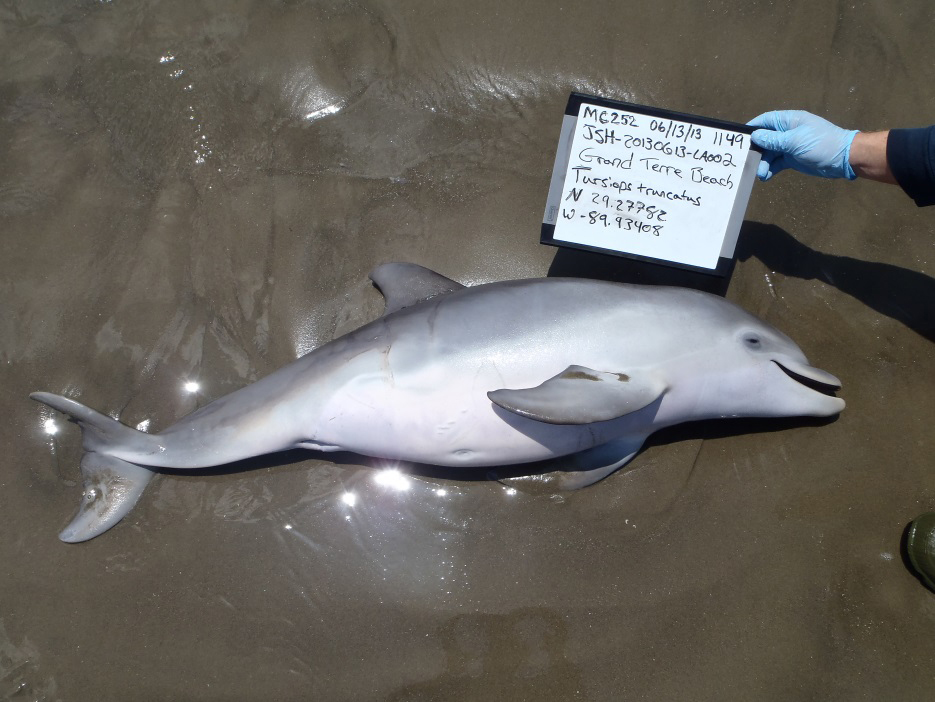
Over a thousand dead dolphins washed ashore along the coastline of the Gulf of Mexico in the four years following the 2010 Deepwater Horizon oil spill, which discharged 4.9 million barrels of oil into the Gulf, and a recently released report suggests pollution caused by the accident at the BP-operated plant is likely linked to the deaths.
The paper builds on an earlier report, which stated: ‘The largest and longest cetacean unusual mortality event (UME) on record in the Gulf of Mexico (GoM) was declared from Louisiana through the Florida panhandle (Franklin County), USA, starting in early 2010 and continuing into 2014.’
A significant percentage of the common bottle-nosed dolphin bodies discovered along the shore were perinates—animals less than 115cm long, typically late-term foetuses that have died inside the womb, or extremely young babies—and authors of the new study, published in Diseases of Aquatic Organisms and reported on the Mongabay website, say the oil spill could have caused female dolphins to abort their young late in pregnancy, and contributed to a higher than usual level of infant mortality in newborns.
Common bottle-nosed dolphins have a gestation period of around 380 days. ‘Pregnant dolphins losing foetuses in 2011 would have been in the earlier stages of pregnancy in 2010 during the oil spill,’ Kathleen Colegrove, the paper’s lead author and a veterinary pathology professor at the University of Illinois Chicago-based Zoological Pathology Program, explains.
Although other incidents of mass cetacean mortality have occurred in the past, the report reveals that the 2010–14 event was the first for two decades to affect the entire Gulf of Mexico region, and the authors say it’s highly unusual in that it continued for such a long period of time, with comparable events lasting on average 6 months. The scientists behind the study also observe that—based on comparisons to previous mortality events, analysis of local data and diagnostic testing from the first two years of the latest UME—a morbillivirus epizootic (disease epidemic) is an unlikely cause of the tragedy.
The report details that 88% of the dead dolphins discovered in the oil-spill zones had lung abnormalities, including collapsed lungs. ‘Exposure to contaminants from the DWH oil spill has been proposed as a potential cause of or contributor to adrenal and lung disease,’ say authors. Later, they go on to describe how: ‘Freeranging Barataria Bay bottlenose dolphins evaluated during live health assessments in August 2011 had evidence of severe lung disease and blood abnormalities consistent with hypoadrenocorticism.’
The paper does acknowledge that there could have been an increase in reported strandings during the period, as a result of heightened public awareness in the wake of the oil spill, but they also say that if this was a significant factor, ‘the number of reported strandings should have been highest immediately following the spill in the summer and fall of 2010, when in fact they were higher throughout 2011.’
‘In summary, this study supports that perinatal dolphins throughout Louisiana, Mississippi, and Alabama were susceptible to foetal distress and in utero infections during the northern GoM UME,’ concludes the report. ‘There continues to be a need to understand why dolphins were particularly susceptible to late-term fetal loss in this UME, including the potential contributing role of the DWH oil spill.’
